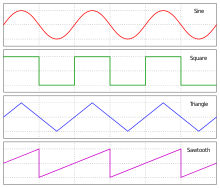Circuit Theory/Convolution Integral

Impulse Response[edit | edit source]
So far circuits have been driven by a DC source, an AC source and an exponential source. If we can find the current of a circuit generated by a Dirac delta function or impulse voltage source δ, then the convolution integral can be used to find the current to any given voltage source!
Example Impulse Response[edit | edit source]
The current is found by taking the derivative of the current found due to a DC voltage source! Say the goal is to find the δ current of a series LR circuit .. so that in the future the convolution integral can be used to find the current given any arbitrary source.

Choose a DC source of 1 volt (the real Vs then can scale off this).

The particular homogeneous solution (steady state) is 0. The homogeneous solution to the non-homogeneous equation has the form:
Assume the current initially in the inductor is zero. The initial voltage is going to be 1 and is going to be across the inductor (since no current is flowing):
If the current in the inductor is initially zero, then:
Which implies that:
So the response to a DC voltage source turning on at t=0 to one volt (called the unit response μ) is:
Taking the derivative of this, get the impulse (δ) current is:
Now the current due to any arbitrary VS(t) can be found using the convolution integral:
Don't think iδ as current. It is really . VS(τ) turns into a multiplier.
LRC Example[edit | edit source]

Find the time domain expression for io given that Is = cos(t + π/2)μ(t) amp.
Earlier the step response for this problem was found:
The impulse response is going to be the derivative of this:
The Mupad code to solve the integral (substituting x for τ) is:
f := exp(-(t-x)) *sin(t-x) *(1 + cos(x)); S := int(f,x = 0..t)
Finding the integration constant[edit | edit source]
This implies:
TO DO[edit | edit source]
This was created with matlab, turned into a gif with ImageMagick, cropped with a photo editor and then released into the public domain.
Several others have created an alternative animation.
- The blue symbol represents .
- The red symbol represents the arbitrary .
- The current due to the VS black (on top of the yellow).
- The turn on event occurs at t = 5 seconds, not 0.
- The voltage of the source is not on indefinitely. It turns on at zero and off at 5 time constants.
























